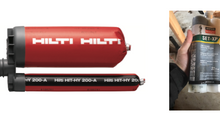Non-Destructive Testing in Construction.

Nondestructive Testing in Construction.
Nondestructive testing - NDT - use test methods to examine an object, material or system without impairing its future usefulness. Non-destructive testing is often required to verify the quality of a product or a system.

Ultrasonic Testing in Non Destructive Testing (NDT) use beams of mechanical waves (vibrations) of short wave length and high frequency to test mainly welds and casts. These are transmitted from a small probe in contact with the specimen surface and detected by the same or other probes.

Such mechanical vibrations have different forms depending on the direction of particle movement in the wave motion, so there are several forms of ultrasonic waves. The most common and widely used in weld NDT testing are compressional and transverse (shear) waves. They can travel large distances in fine-grain metal and an oscilloscope display (A-scan) shows the time that it takes for an ultrasonic pulse to travel to a reflector (flaw or back-surface).

Applications of Ultrasonic Testing Inspection:
Reinforcement location which is cast in Concrete. Location of manufacturing defects in welds and castings through to Corrosion / Erosion monitoring and large-scale corrosion mapping.

Welding Inspection's such as moment frames, bracing and stiffening locations. Complete and partial penetration groove welds.
King Inspection Services have a number of flexible independent inspectors that we utilize for its Radiographic or Ultrasonic Testing.
Other commonly used NDT techniques are:
AET - Acoustic Emission Testing
ART - Acoustic Resonance Testing
ET - Electromagnetic Testing
IRT - Infrared Testing
LT - Leak Testing
MT - Magnetic Particle Testing
PT - Dye Penetration Testing
RT - Radiographic Testing
UT - Ultrasonic Testing
VT - Visual Testing (VI - Visual Inspection)
AET - Acoustic Emission Testing
Acoustic Emission Testing takes advantage of the sharp sound that PCCP emits when it breaks or slips to identify areas of active distress within a construction. AET can be used to verify the structural integrity of pressure vessels, spheres, high temperature reactors and piping, coke drums, above ground storage tanks, cryogenic storage tanks and more. The inspection is executed externally and shut-down of the process may often not be necessary.
ART - Acoustic Resonance Testing
After an impact a specimen will vibrate in certain characteristic modes and frequencies that can be measured by a microphone or laser vibrometer. Acoustic sonic and ultrasonic resonance analysis is a non-destructive testing technique that allows testing of a wide range of test objects. Typical detecting faults are cracks, cavities, detached layers, material inconsistencies, hardness deviation in materials.
ET - Electromagnetic Testing
Electromagnetic testing is the process of inducing electric currents and/or magnetic fields inside a test object and observing the response. A defect in the test object may be detected where electromagnetic interference creates a measurable response.
IRT - Infrared Testing
Infrared testing is a technique that uses thermography, an infrared imaging and measurement camera, to see and measure infrared energy emitted from an object. Can be used to heat development, lack of insulation, thin walls in constructions and more.
LT - Leak Testing
Techniques used to detect and locate leaks in pressure containment parts, pressure vessels, and structures. Leaks can be detected by using liquid and gas penetration techniques, electronic listening devices, pressure gauge measurements or soap-bubble tests.
MT - Magnetic Particle Testing
Magnetic particle testing is accomplished by inducing a magnetic field in a ferromagnetic material and then dusting the surface with iron particles. The surface will produce magnetic poles and distort the magnetic field in such a way that the iron particles are attracted and concentrated making defects on the surface of the material visible.
PT - Dye Penetration Testing
The dye penetrant testing can be used to locate discontinuities on material surfaces. A highly penetrating dye on the surface will enter discontinuities after a sufficient penetration time, and after removing the excess dye with a developing agent, the defects on the surface will be visible.
RT - Radiographic Testing
Radiographic testing can be used to detect internal defects in castings, welds or forgings by exposure the construction to x-ray or gamma ray radiation. Defects are detected by differences in radiation absorption in the material as seen on a shadow graph displayed on photographic film or a fluorescent screen.
UT - Ultrasonic Testing
Ultrasonic testing uses high frequency sound energy to conduct examinations and make measurements. Ultrasonic inspection can be used for flaw detection/evaluation, dimensional measurements, material characterization, and more.
VT - Visual Testing (VI - Visual Inspection)
Visual testing or inspection offers a wide range of options to secure proper system or product quality.
Nondestructive Testing Standards

ASTM's nondestructive testing standards provide guides for the appropriate methods and techniques used to detect and evaluate flaws in materials and objects without destroying the specimen at hand. Such tests include radiographic, ultrasonic, electromagnetic (eddy-current), X-ray, acoustic, and tomographic techniques. Detected flaws are evaluated for possible rejection due to nonconformance to set acceptance criteria. These nondestructive testing standards are instrumental to laboratories and a wide variety of industrial plants for examining a material's quality and consequently, suitability for intended use.
For further ASTM information:
www.astm.org



















